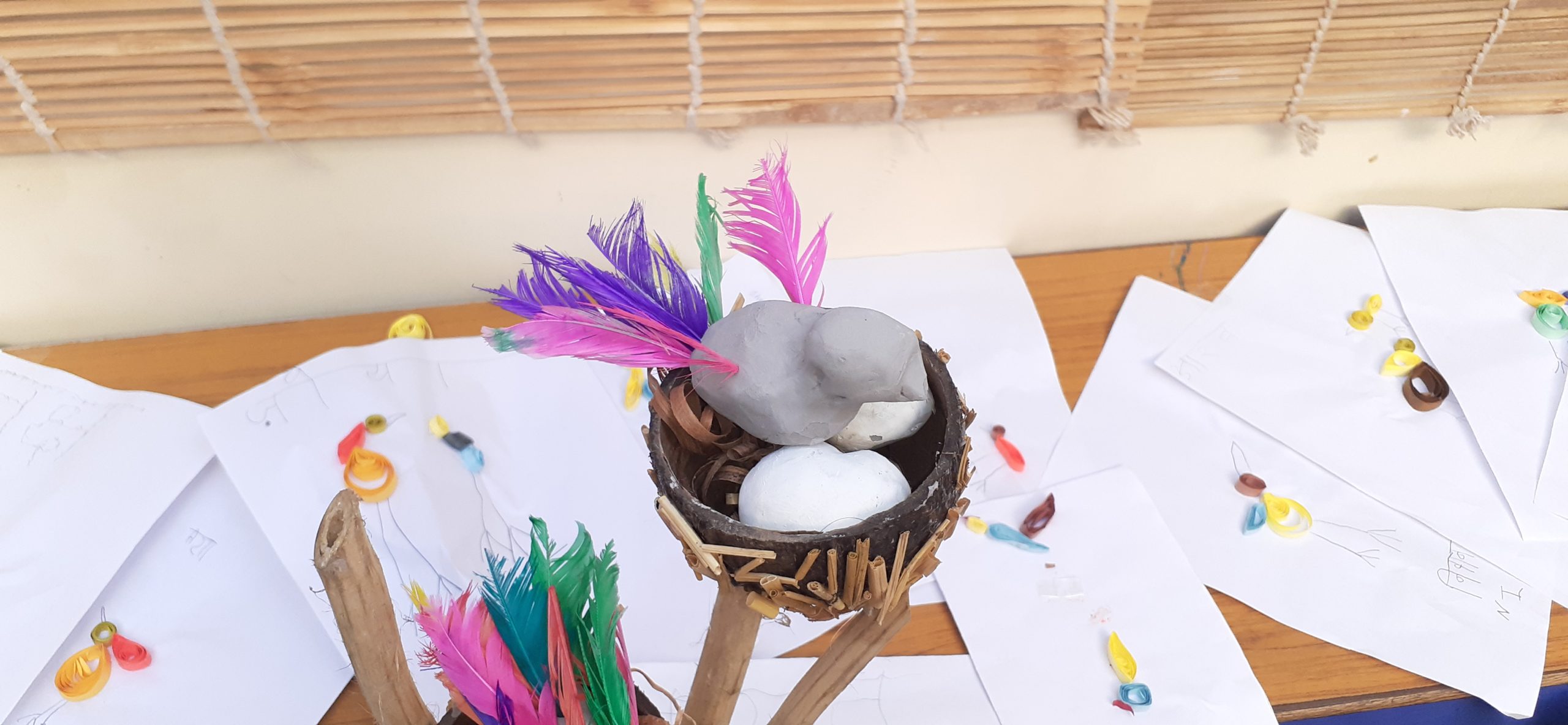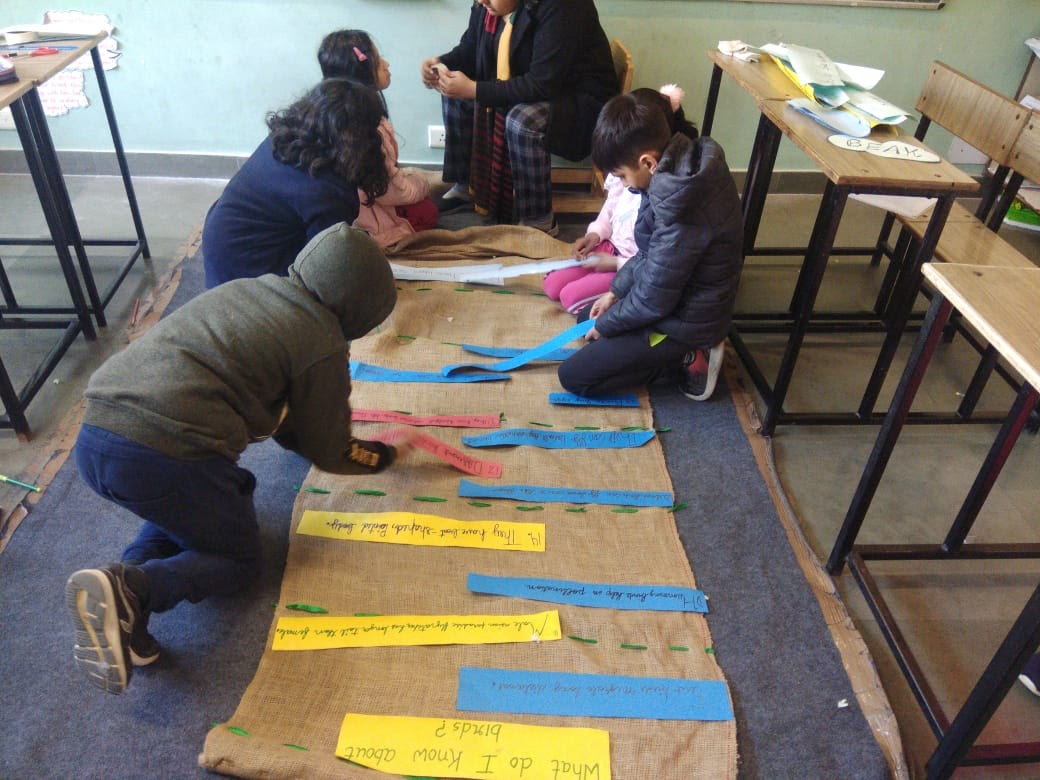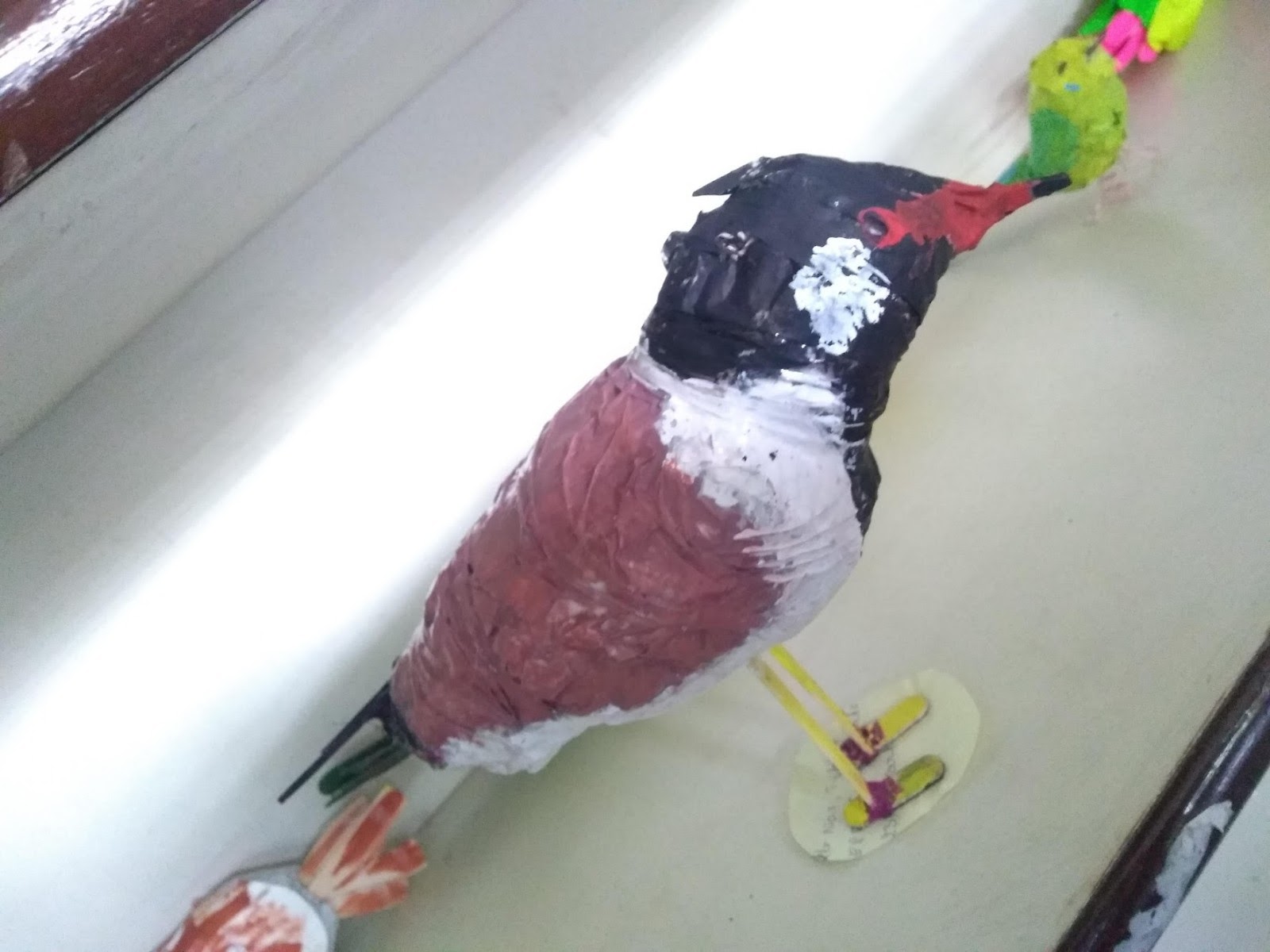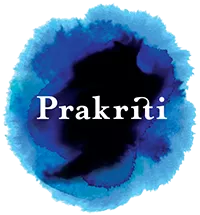
Prakriti uses project-based learning approach extensively to go beyond the restricted and often incomplete academic understanding to deeper appreciation of concepts. Each project combines the children’s expressions of creativity – verbal as well as written, music as well as dance, art as well as craft, with experiments to observe real-life concepts concretely, collection of factual information, while developing a spirit of curiosity, inquisitiveness, reasoning, logical thinking, and deduction. All projects have elements of hands-on work either related to art, environment or science, to facilitate the development of integrated knowledge of the same.
Last year, I worked on about four projects, on an average of six weeks’ duration each with Grade Four. Here I discuss how I went through teaching-learning process on these projects:
Me, Myself and My Family: Awareness of self in relation to the social environment, helps an individual to better understand and reflect upon the world around him/her. The project Me and Myself was aimed at developing awareness of one’s emotional triggers, likes and dislikes, a sense of independence and responsibility towards family.
From making personalized emotional graphs to exploring gender stereotypes, the project proceeded in a gradual progression from ‘Me’ to ‘Myself’ to ‘My family’. The project created an opportunity for children to form a deeper understanding of each other’s families. Children wrote about what makes a family a “family”, which directed them towards challenging their preconceived notions about a family. They studied varied family compositions, for instance, a single parent family, joint family, a nuclear family and adoptive families. Such activities helped children to build empathy, appreciate and respect cultural and ethnic diversity, and reflect on the fact that each family has to work together to run a household and build a conducive family environment, and is unique and happy! This thought was reinforced through simulation of day to day household activities.
Birds: The group embarked on a mission to gather all the knowhow needed to make the transformation from birdwatchers to avid bird admirers! Not only did they get the opportunity to observe the birds in their natural habitat by visiting places like Asola Bhatti Wildlife Sanctuary, but they also created opportunities for observation themselves by making bird baths at home. They further explored “What makes a bird a bird?” and identified its various characteristics. From scientifically enquiring how a sound is produced to comparing birds’ beaks with simple machines, the learners went deeper into the process of learning. Throughout the project, they were able to document their detailed observations in the observation sheets, commenting on the types of feet, beaks, tail and feathers.
Diversity in Flora: To strengthen the connect with nature, the project Diversity in Flora was initiated. The project started with identification of the unique characteristics of different plants. They categorised the different parts of plants as edible and non- edible. Children were able to break their preconception that every underground part of a plant is a root, when they observed structural differences between bulbs and roots. Children were introduced to characteristic features such as simple and compound leaves, tap and fibrous roots.
Through experiments, they could learn how plants take essential elements from the environment, make predictions and corroborate them. Children’s curiosity about what plants do with water and air, probed them to unravel the process of photosynthesis through videos and discussions.
My Neighborhood, My City: The project aimed at creating an understanding of neighbourhood and becoming an active participant in identifying the needs of the community. Children explored and observed the components in their surroundings and classified them into categories like houses, facilities, cleanliness, parking and others. Children also explored the use of landmarks and various signage. They mapped their neighbourhood strengthening their mapping skills. They have learned to decipher the components of an address and analysed the meaning and progression of writing an address. Children were asked to identify the pictures of iconic parts of the city, for instance metro, Chandni chowk market, Mall of India etc. In addition to the activity, a famous monument of the city, Qutub Minar was discussed in detail. Children wrote the ‘Tale of Qutub Minar’ personifying themselves as Qutub Minar and expressed the changes that have happened around the monument and in the city over time.




About the Author
Yamini Pal is a facilitator with Prakriti for last three years. She engages learners in Primary grades with enquiry and project-based learning. She loves to experiment new tools and build on meta-cognitive skills (how to think) in her learners.
